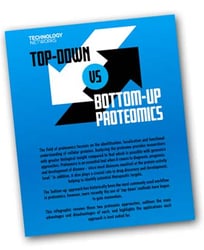Proteomics is an essential tool for the diagnosis, prognosis, and development of disease – since most diseases manifest at the protein activity level. In addition, it also plays a crucial role in drug discovery and development, helping to identify potential therapeutic targets.
The ’bottom-up’ approach has historically been the most commonly used workflow in proteomics, however, more recently the use of ‘top-down’ methods have begun to gain momentum.
Download this infographic to:
- Review both approaches
- Learn the main advantages and disadvantages of each approach
- Discover the applications each approach is best suited for

Sponsored by

